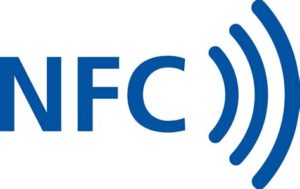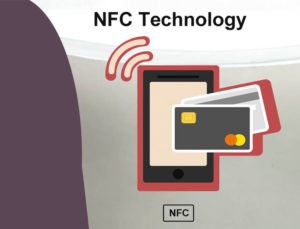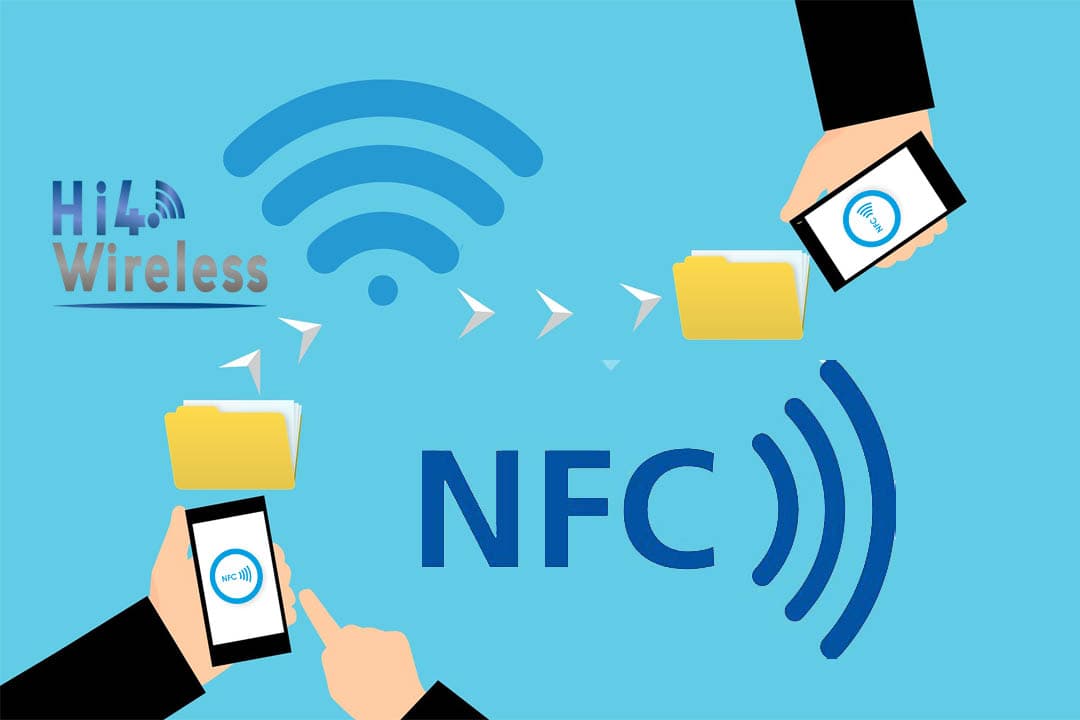NFC (Near Field Communication) is a technology that allows two very close devices (less than 4 cm) to transmit data very quickly (less than a second). These terminals can be two smartphones or phones and another device such as a push station or a remote amplifier.
An extension to the ISO / IEC 14443 standard, derived from RFID technology, uses low speeds (between 106 and 414 kbps) and requires no pairing (unlike Bluetooth for example), which allows two devices to automatically connect that they are close to each other.

General description of NFC technology
NFC also knows as near field communication, It was founded in 2014 and the best part of NFC is the contactless payments. It became so popular these days because of quick payment through mobile phones.
NFC enables short-range communication between two devices to transfer and receive files through the air. You can transfer files and photos between two compatible NFC devices.
There are two types of NFC devices. Active and Passive NFC devices.
Active devices are capable of both sending and receiving information, and will interact with each and every active and passive NFC devices. Smartphones are undoubtedly the most frequently used NFC device. Public transportation card readers and their signature payment terminals are great examples of active NFC technologies.
Passive NFC devices contain tags, as well as other very small transmitters, that transmit data to other NFC devices with no extra power source. Passive NFC devices don’t need any external power source to work with.
How NFC works?
The technology used in NFC is an upgrade of RFID (radio frequency identification) that connects a smart card and a user to interact. You can transfer or receive data once you have a connection between two NFC enabled devices.
The range of NFC is limited between 15-20 cm and it can transfer data with the speed up to 400 KB per sec.
With NFC, you don’t need any kind of pairing between two devices which is pretty common in Bluetooth or WIFI technology and It’s much power-efficient than Bluetooth. That is the reason NFC is widely used to pay digitally.
Uses of NFC in modern days
NFC allows users to transfer or receive content between NFC enabled devices, pay bills or even use their phones as an e-ticket in any sort of public transport.
The advantages of NFC over Bluetooth are you don’t need any kind of pairing, connection established between two devices under 100ms, which is way faster than Bluetooth.
Due to the short range of connectivity, NFC provides better security than Bluetooth in crowded areas where radio signals can merge due to so many devices.
You don’t need a power source in both devices, You can transfer data to a client device (Such as smart credit cards, NFC tags, etc) where you don’t need any inbuild power source from a host device.

Advantages of NFC
Quick Payment
It saves a lot of time by connecting to the other NFC enabled device in just 0.1 seconds.
Allows Multiple cards load
You can load as many cards in your NFC enabled mobile phone. You don’t need to carry physical cards anymore.
Security
NFC technology reduces the risk of hijacking, Your data is secured because of its short-range connectivity in crowded areas.
Three different modes of NFC technology
Near field communication can work in three different ways:
Card Emulation Mode:
This allows you to use an NFC enabled device as a contact card. Besides the smartphone, NFC connects to the SIM card, where the encrypted data can be stored. Near field communication lets you connect to the near field by transferring your mobile device to an NFC_ Android offline payment card, loyalty card, transfer ticket, etc.
Reader Mode:
That turns your mobile device into a “marker” reader (electronic signs), which makes it possible to obtain information or run an application automatically on your phone.
For example, this operating mode can be used on a museum tour, where you can learn more about this or that business by calling your smartphone on the sign. These NFC tags also allow knowledge of the ability to track a food product, the environmental impact of the game, or even the next bus waiting time at a sophisticated transport station.
Peer-to-peer Mode:
It is the mode that allows the exchange of information between two devices equipped with NFC technology. So you can, for example, transfer photos, videos, or text from one device to another by having to bring them closer together.
How do you know if your smartphone is equipped with NFC Android technology?
While Sony was the first brand to place an NFC chip in its mobile phones, most Android phones today are equipped with this technology and some Apple devices also host NFC technology on iOS, which indicates that Near field communication technology has conquered the market. To activate it on your phone, just go to your device’s wireless settings, then turn it on.
Please note that some older portable models may not have NFC Android technology.
How to activate NFC on a smartphone?
It’s easy to activate it on your smartphone:
- Go to your phone’s settings.
- Click “Wireless & Networks” if you have an Android device.
- Select the “NFC” tab.
- Then activate it.
What about security?
For NFC advocates, data transmission between two NFC-equipped devices is very well secured for two main reasons:
1- compliance with standards (14443 and FeliCa) using encryption and authentication algorithms.
2- As well as the short distance required for communication between two devices equipped with near field communication technology. which automatically reduces the risk of theft data.
On the piracy and theft side, we are pointing the finger at security vulnerabilities that could severely harm NFC users: In the early 2016 Chaos Computer Club, a group of German hackers, for example, hacked bank cards with NFC technology.
How? The hacker easily created a specific application installed on a smartphone, and they were able to retrieve the PIN code of a certain number of bank cards equipped with NFC, simply by placing their phones on the cards (in the metro for example). To remedy these possible data thefts, banks have limited NFC payments of € 30. We can also discuss the problem of collecting all your data in one-stop which, if lost or stolen, will leave you helpless.
Finally
Using NFC regularly, you can create a large collection of data about your consumption habits, which can be exploited for commercial purposes without your knowledge. Fortunately, a strict framework for this technology is provided by the National Computing and Liberties Commission (CNIL), the body that is supposed to monitor everything related to consumer data protection.
It should be noted that the economic standards, specifications, and models associated with this technology are not fixed and evolving because they are integrated into consumer electronic equipment designated by users.

